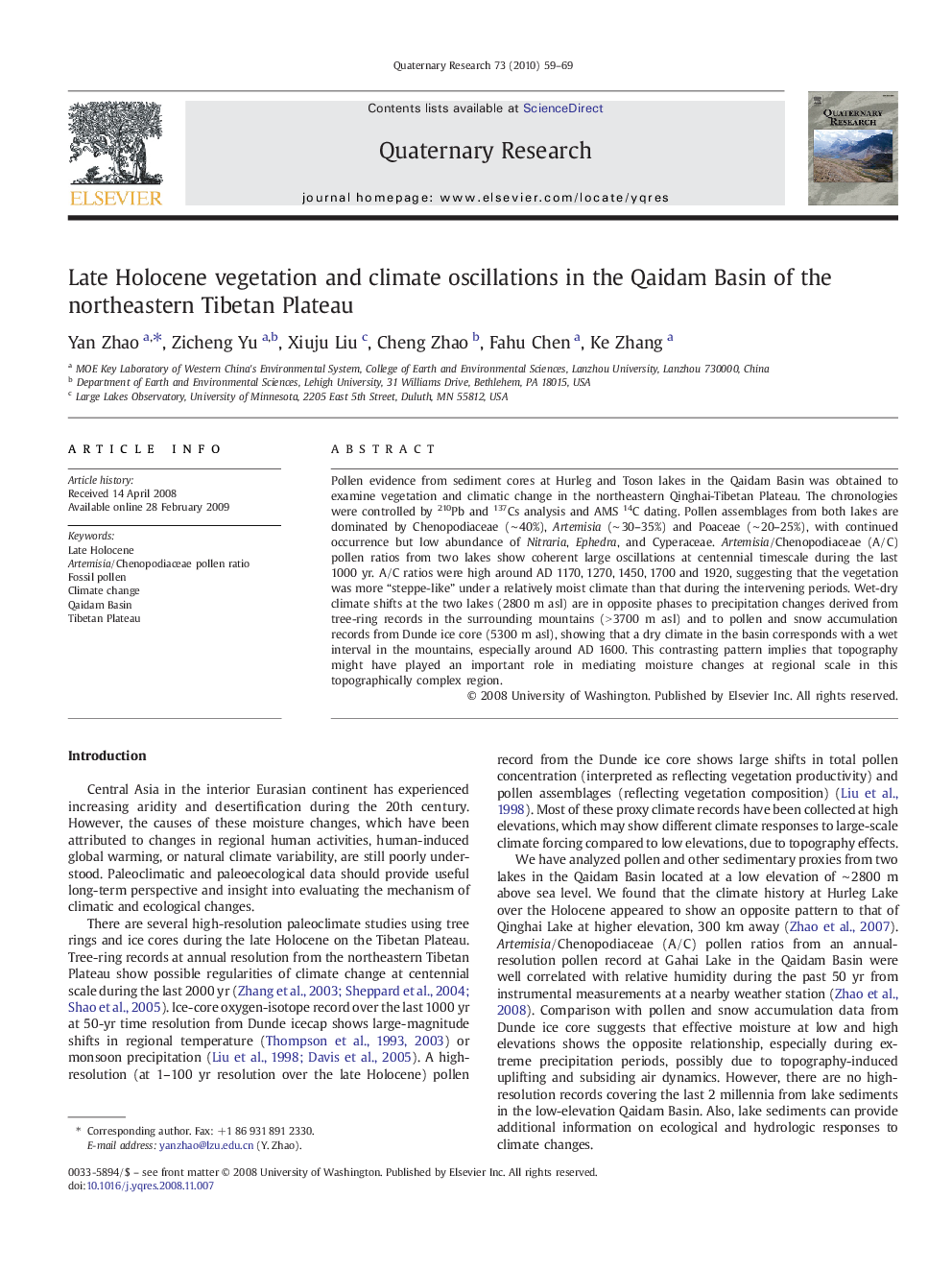| Article ID | Journal | Published Year | Pages | File Type |
|---|---|---|---|---|
| 1045796 | Quaternary Research | 2010 | 11 Pages |
Pollen evidence from sediment cores at Hurleg and Toson lakes in the Qaidam Basin was obtained to examine vegetation and climatic change in the northeastern Qinghai-Tibetan Plateau. The chronologies were controlled by 210Pb and 137Cs analysis and AMS 14C dating. Pollen assemblages from both lakes are dominated by Chenopodiaceae (∼ 40%), Artemisia (∼ 30–35%) and Poaceae (∼ 20–25%), with continued occurrence but low abundance of Nitraria, Ephedra, and Cyperaceae. Artemisia/Chenopodiaceae (A/C) pollen ratios from two lakes show coherent large oscillations at centennial timescale during the last 1000 yr. A/C ratios were high around AD 1170, 1270, 1450, 1700 and 1920, suggesting that the vegetation was more “steppe-like” under a relatively moist climate than that during the intervening periods. Wet-dry climate shifts at the two lakes (2800 m asl) are in opposite phases to precipitation changes derived from tree-ring records in the surrounding mountains (> 3700 m asl) and to pollen and snow accumulation records from Dunde ice core (5300 m asl), showing that a dry climate in the basin corresponds with a wet interval in the mountains, especially around AD 1600. This contrasting pattern implies that topography might have played an important role in mediating moisture changes at regional scale in this topographically complex region.
